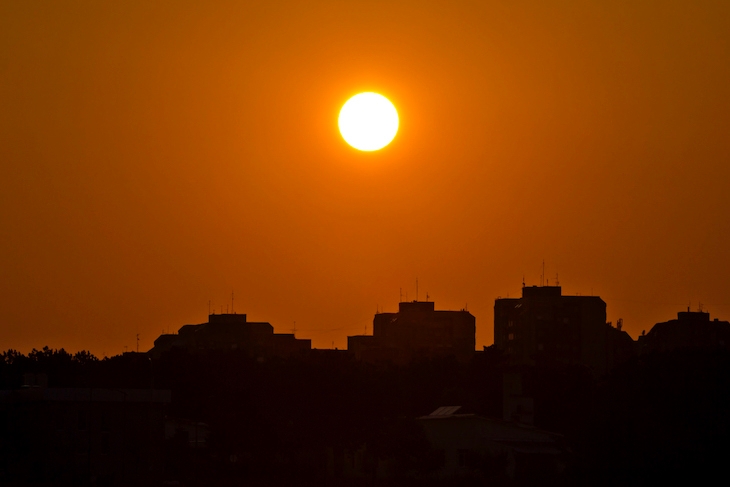As we know, carbon emissions are going to have to be eliminated in the coming decades to prevent us suffering from fire, flood, tempest and plagues of locusts. But in one important respect is the cure actually worse than the disease? That’s the surprising implication of a statement on deaths from last year’s heatwave by Bob Ward, the Director of the Grantham Research Institute on Climate Change at the London School of Economics. In response to figures suggesting that there were 892 excess deaths between last June and August, a period which saw the highest temperature ever recorded in Britain, he said: ‘Tragically, many of these deaths are likely to have been preventable. Previous research has shown that many of the people who are killed by heatwave conditions die in their own homes or in care homes that overheat.’
But why are homes overheating? In a rush to build more energy-efficient homes, and to retrofit existing homes with insulation, we are forcing people to live in buildings which are trapping heat. That might make life more pleasant – and cut heating bills – in the winter, but come summer it is creating a hothouse nightmare. In 2015, Emily Hill wrote in these pages of her own nightmare living in an ‘eco home’ in Central London.
This was no slum, but a brand new mixed development incorporating everything from plush penthouses to social housing close to the River Thames. It was built to the very latest building regulations which are supposed to take account of climate change and the need to slash emissions. Indeed, it did cut occupants’ bills and, presumably, use less fossil fuel than a traditionally-built block. Trouble is, for its occupants it was also bringing forward the day when we are told that our cities will become unpleasantly warm. For three months, Emily reported, temperatures in her flat hovered between 28 and 32 Celsius. Residents were becoming dehydrated and had resorted to running not-very-environmentally-friendly mobile air conditioning units for 24 hours a day. It is not an isolated case: other social housing developments have been found to have the same problem.
There is no reason why we shouldn’t be able to build homes which are both energy-efficient as well as cool in summer. It means putting up buildings which have good thermal mass – meaning the walls, floors or both can absorb and release large amounts of heat to smooth out temperature differences between night and day. It means stopping building glass-fronted flats which generate their own miniature greenhouse effect. And it means fitting well-sealed homes with mechanical ventilation systems to ensure a good amount of air exchange with the outside. Such ventilation is standard in Scandinavian homes but is rarely seen in Britain.
But as with so many things where climate change is involved, government and its agencies are being panicked into making quick-fixes. We have subsidised schemes to stuff homes with insulation and to seal windows and doors against drafts, but we don’t have effective regulations to ensure that buildings can be kept cool in hot weather nor that air quality inside buildings remains high. If summer temperatures continue to rise it will turn into a lethal combination which will be far worse than the rise in outside temperature.







Comments